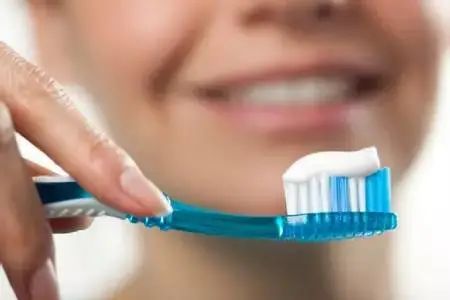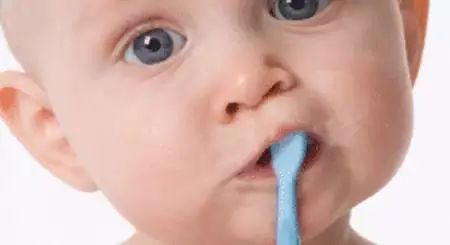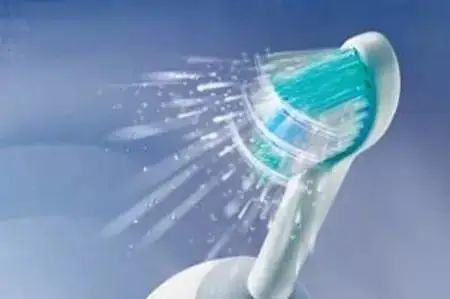Can whitening toothpaste make you have black-like white teeth? Should toothpaste be wet when brushing? Should you brush your teeth before or after meals? …Those things about teeth, let’s explain them one by one.
Myth 1: Whitening toothpaste gives you black-like white teeth

Source | pixabay
Correct view:
Whitening toothpaste refers to toothpaste that contains some whitening ingredients. Whitening here actually refers more to “brightening”. You can see from the literal meaning that “bright” refers to improving the luster of the teeth, and “white” refers to improving the color of the teeth. So, can whitening toothpaste do it?
General dentists usually use special color guides to determine the color of teeth in clinical practice, and VITA color guides are the most used. The colors on the professional whitening palette are arranged from light to dark as follows:

Source | nhsdentistgoole.com/teeth_whitening_in_goole
There are 4 color tendencies of English letters: A for reddish-brown, B for reddish-yellow, C for gray, and D for reddish-gray. Arabic letters indicate the degree of discoloration. For example: C3 means that the patient’s teeth belong to span tetracycline teeth; A3.5 means that the patient’s teeth are obviously yellow teeth.
The color of normal healthy teeth is yellowish, which is the color of the dentin exposed by the enamel. Although hereditary diseases, environmental factors, infectious diseases, etc. can affect the color of teeth, it is basically impossible to use only home whitening products such as home whitening toothpastes if you want to make your teeth white as shown in TV advertisements. A toothpaste that only works for a few minutes is even less likely.
In professional dental whitening treatment, the dentist will conduct colorimetry before and after treatment, and judge the treatment effect by the difference between the two color numbers. According to professional cold light whitening treatment instrument, it can increase 5~14 color numbers, and general household whitening products can increase up to 3~4 color numbers.
As for “brightness”, the color of the teeth is related to the smoothness of the enamel of the teeth. Brushing can keep the glaze clean, and the abrasives in toothpaste, with the help of good brushing methods, can theoretically make teeth brighter. This is the same principle as shoe polishing or jade polishing.
As for “black-like white teeth”, this question is actually very interesting, and there is no strong colorimetric evidence that blacks have whiter teeth. As far as the black people I have seen, aside from the contrast of skin color, the color shade of their teeth is no different from that of ordinary Chinese. Therefore, “black-like white teeth” is not a reasonable standard, and it cannot be said that it can be satisfied. Otherwise, tanning yourself to be shiny black can be regarded as a way to have “black-like white teeth”. .
In addition, teeth cannot blindly pursue whiteness, natural coordination is the highest standard of teeth beauty. (If you have to pursue whiter teeth, it’s okay, but you must be alert to the “little tricks” for whitening your teeth. These “little tricks” that lied to you not only can’t whiten your teeth, but also cause damage to your teeth.)
Misunderstanding 2: Toothpaste without water is the correct way to brush your teeth

Source | usedc.blogspot.com
Correct view:
This rumor has been circulating on Weibo for a long time. In fact, except for some special toothpastes, such as toothpaste containing anti-allergic ingredients, dry brushing is recommended because the active ingredients will be released quickly when exposed to water. effect has no direct effect.
The main purpose of brushing teeth is to clean, which is mainly achieved by the friction of the abrasives in the toothbrush and toothpaste on the surface of the teeth; in addition, there are some surfactants and foaming agents that play an auxiliary cleaning role. These ingredients are generally It needs to be dissolved in water to work.
However, the mouth itself is a moist environment, and adult salivary glands can secrete up to 1.5 liters of saliva per day (you can choose not to believe it, but it is a fact that you swallow so much saliva every day…..). When brushing your teeth, due to the stimulation of toothbrush and toothpaste, the salivary glands will work harder to secrete saliva, so regardless of whether the toothpaste is wet or not, brushing is carried out in a humid environment.
So the statement “it’s right to brush the toothpaste without water” is not true, and I haven’t found any authoritative research results to support this statement. A better practice—and in fact most people do—is to take a sip of water before brushing, moisten your mouth, spit it out, and then brush normally. If you are used to squeezing toothpaste on your toothbrush and then dipping water in a cup before brushing your teeth, one of the obvious disadvantages is that the toothpaste is easy to fall off. In addition, it has no effect on the cleaning effect of brushing your teeth. You don’t need to change your brushing habits deliberately.
Myth 3: Brushing your teeth right after a meal, cleaning your mouth vs brushing your teeth right after a meal will brush the enamel off

Source|advancedental.com.au
Correct view:
The purpose of brushing is to clean your mouth and keep your teeth healthy, but not right after meals, depending on what you eat/drink. If you have just eaten a food with a low pH value or drank a carbonated beverage, it is best not to brush your teeth for 30 minutes. Because tooth enamel becomes fragile after being eroded by acid, brushing at this time does damage the tooth enamel. In addition, it is recommended to use a straw when drinking carbonated drinks, which can reduce the contact time between teeth and carbonated drinks.
Other times, though, the enamel isn’t as fragile, and brushing after meals is a great way to keep your mouth clean. If you do not have the conditions to brush your teeth after meals, gargling is the next best choice.
Myth 4: You need 1 regular toothbrush, 1 electric toothbrush, 1 small toothbrush for brushing the back teeth, and flossing to remove dirt between teeth

Source | extradenta.lt
Correct view:
“You need three toothbrushes” is an exaggeration. Brushing your teeth is actually very simple. To clean your teeth and oral cavity, electric toothbrushes are no more reliable than manual toothbrushes. The key lies in the correct brushing method and long-term persistence.
Under normal circumstances, we recommend choosing a small-head toothbrush with relatively fine bristles and moderate hardness, so that it can play a better cleaning effect when brushing your teeth: the fine bristles are easy to penetrate into the gap, and the bristles with moderate hardness can ensure the cleaning effect. In order to avoid damage to the gums under certain circumstances, the small head is to facilitate the movement of the toothbrush in the mouth, and can easily penetrate into various positions to clean difficult-to-reach parts such as the distal side of the last molar. Such a toothbrush can effectively achieve the purpose of brushing our teeth.
Usually pay attention to put the toothbrush with the brush head facing up to the ventilated place, which is conducive to rapid air drying and avoid bacterial contamination. It is enough to replace the toothbrush in time after the bristles are fatigued in about three months. If you are really particular, you must configure three toothbrushes to show the domineering spirit of the rich and handsome. Of course, there is nothing wrong with it, but it is not necessary.
The recommendation to use a toothbrush with dental floss is correct, but it is generally recommended to use dental floss before brushing to remove food residues and soft scales that cannot be reached by the toothbrush, such as the adjacent surfaces of the teeth, and then brush the teeth, which can be removed together. Toothpicks are not recommended for use, as it is easy to cause gum recession. Moreover, domestic toothpicks are made rough, and there may be burrs to damage the gums. More importantly, toothpicks are not guaranteed to have the risk of infection due to disinfection.
Misunderstanding 5: Orthodontics can be done at any age vs. Orthodontics should be completed before the age of 30, otherwise the teeth are easy to loosen, and fixed braces must be worn at night

Left: Emma Watson undergoing orthodontic treatment | Right: Tom Cruise undergoing orthodontic treatment.
Correct view:
Orthodontics (professional called orthodontics) are based on remodeling of the alveolar bone. The alveolar bone is continuously absorbed and generated throughout its life. It can be simply understood as a slowly deforming plasticine (of course, the specific process is actually very complicated): because the alveolar bone can be deformed, we exert force on the teeth When the teeth are moved, the teeth can be moved in the desired direction to achieve the purpose of rearrangement.
When you are young, the osteoblasts and osteoclasts in the alveolar bone are more active, and as the age increases, the activity also decreases, so the effect of straightening teeth at a young age is better, and the time required is generally shorter. short. The older you are, the longer it will take to achieve the same corrective effect. As for whether you need orthodontic treatment or not, your dentist’s opinion is more valuable.
Author: Panda Toothache
This article is from Nutshell and may not be reproduced without authorization.
If necessary, please contact [email protected]

This article is reproduced from: http://www.guokr.com/article/461584/
This site is for inclusion only, and the copyright belongs to the original author.